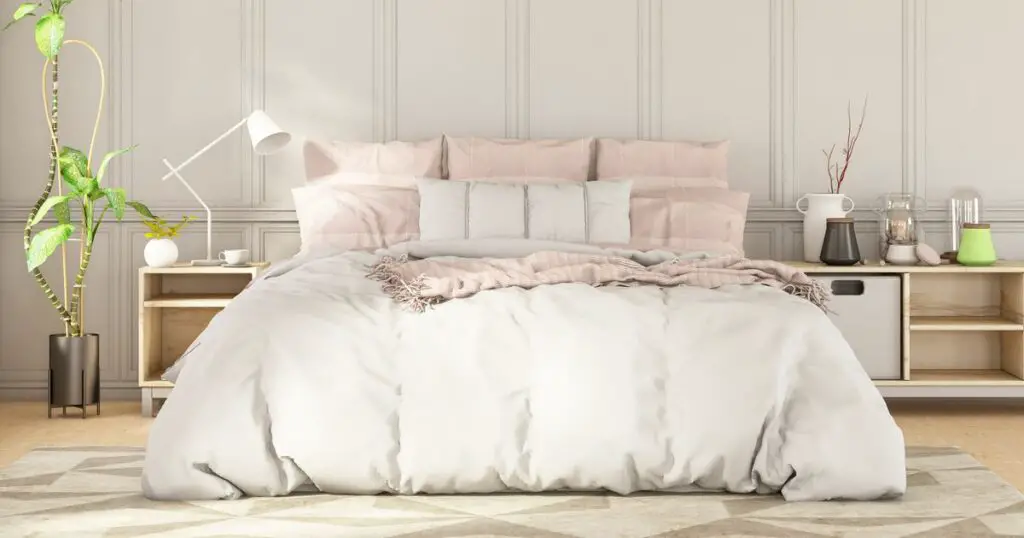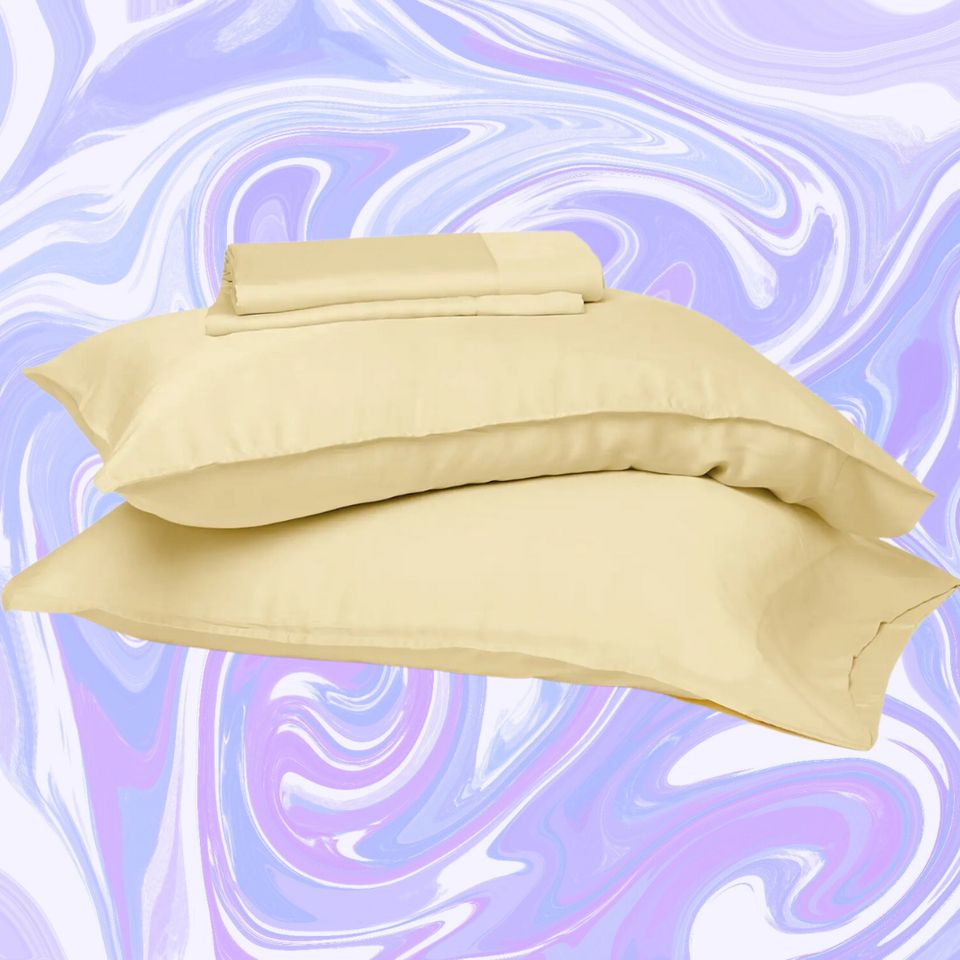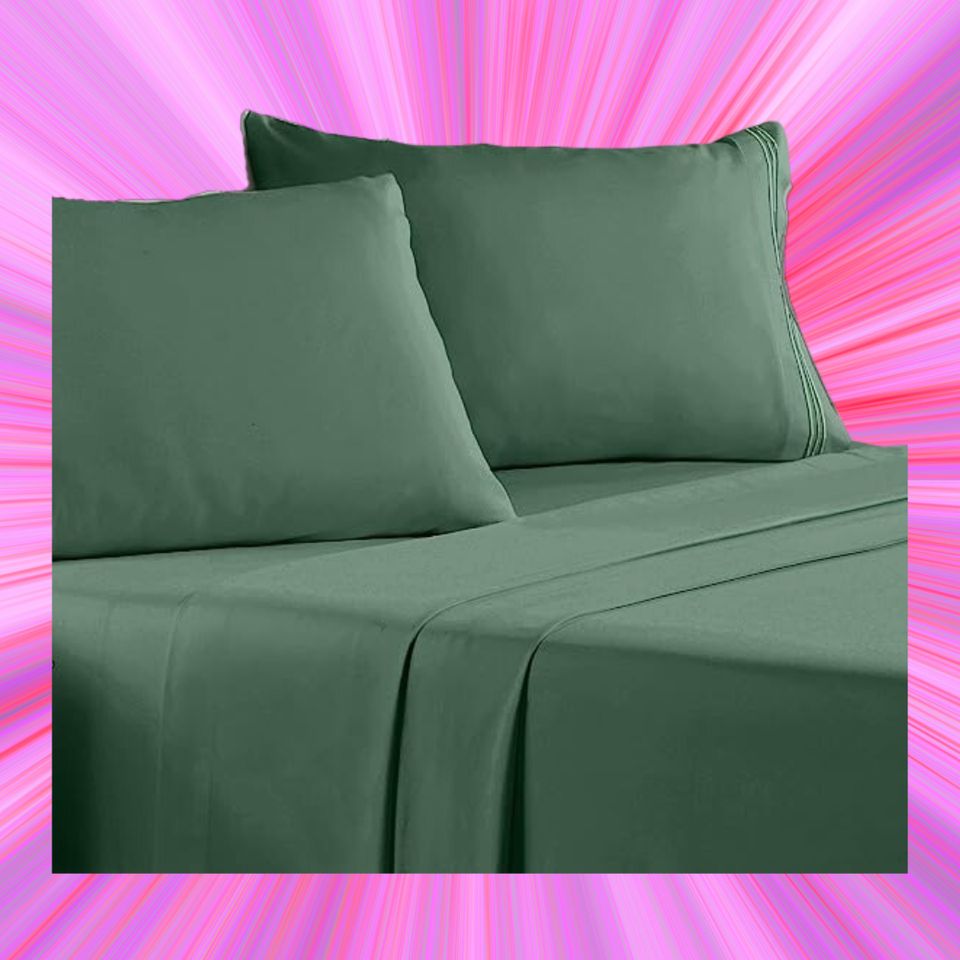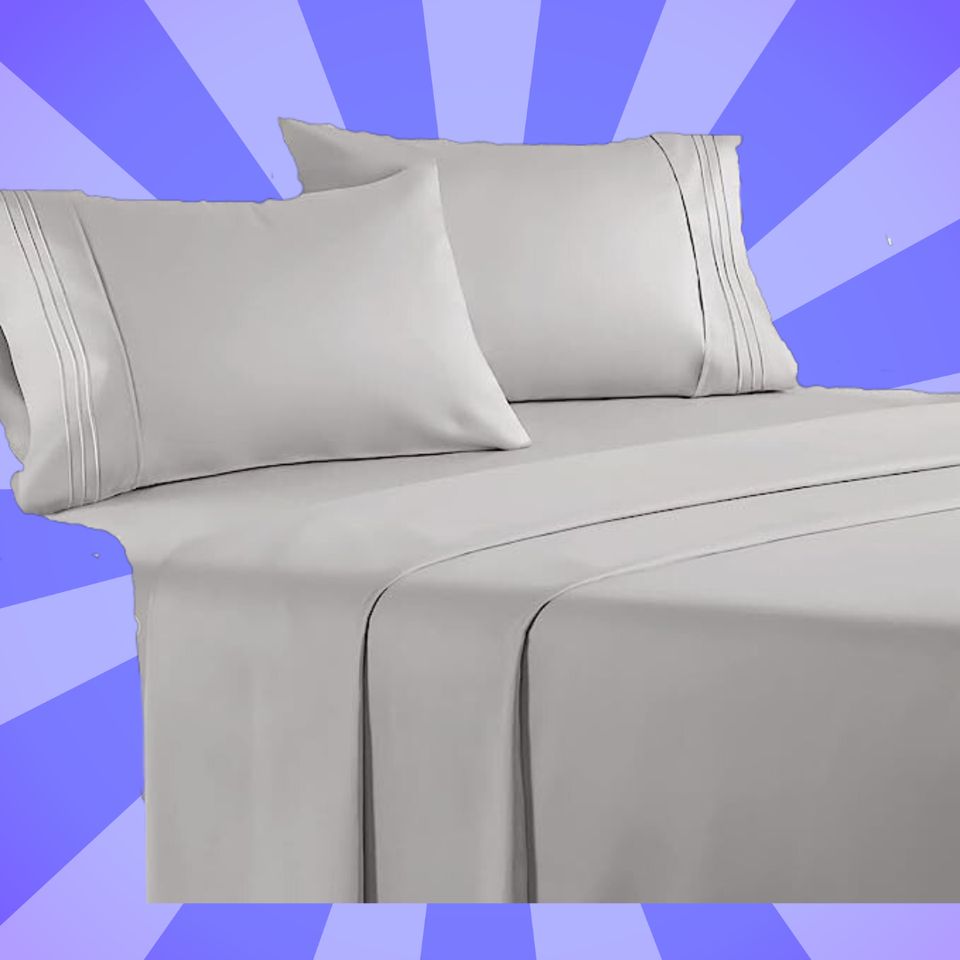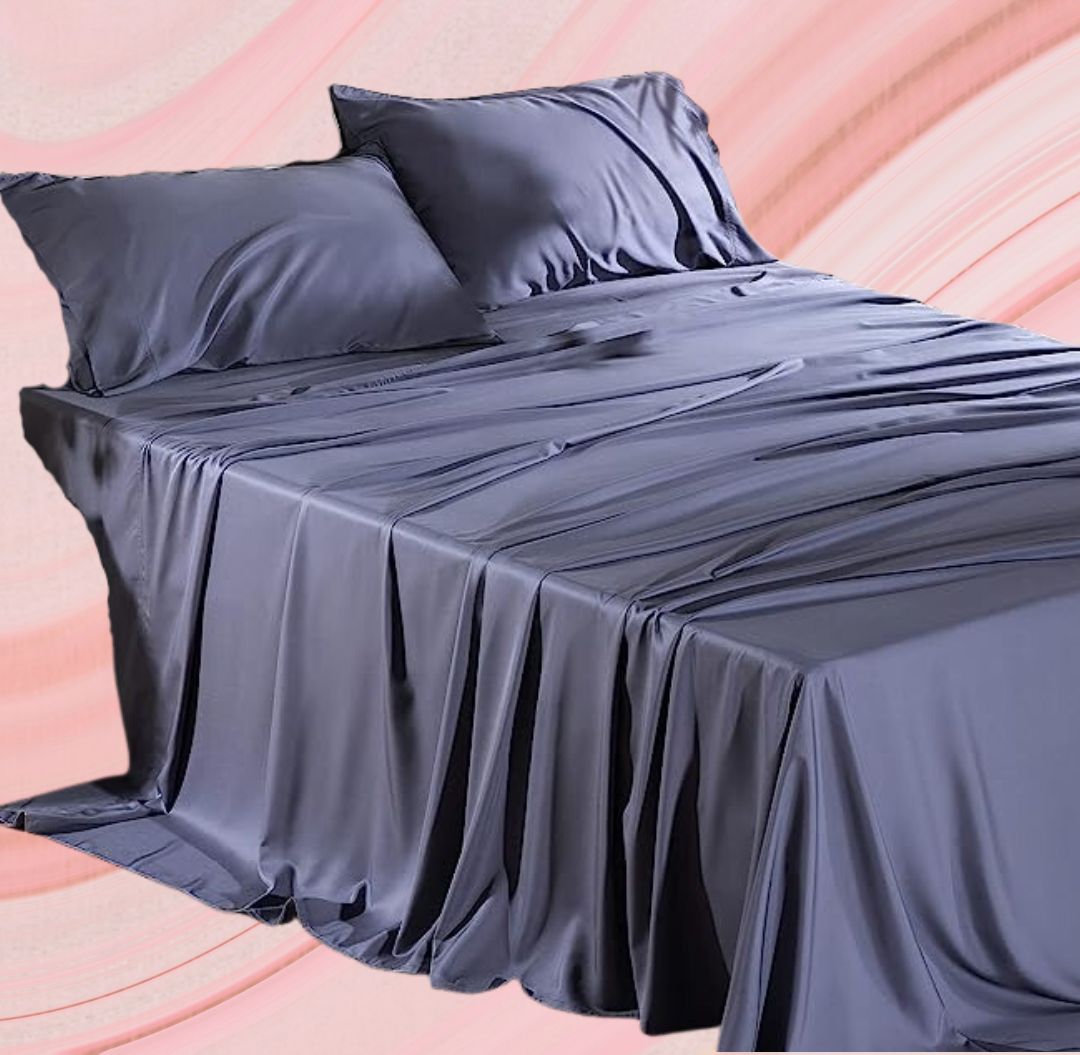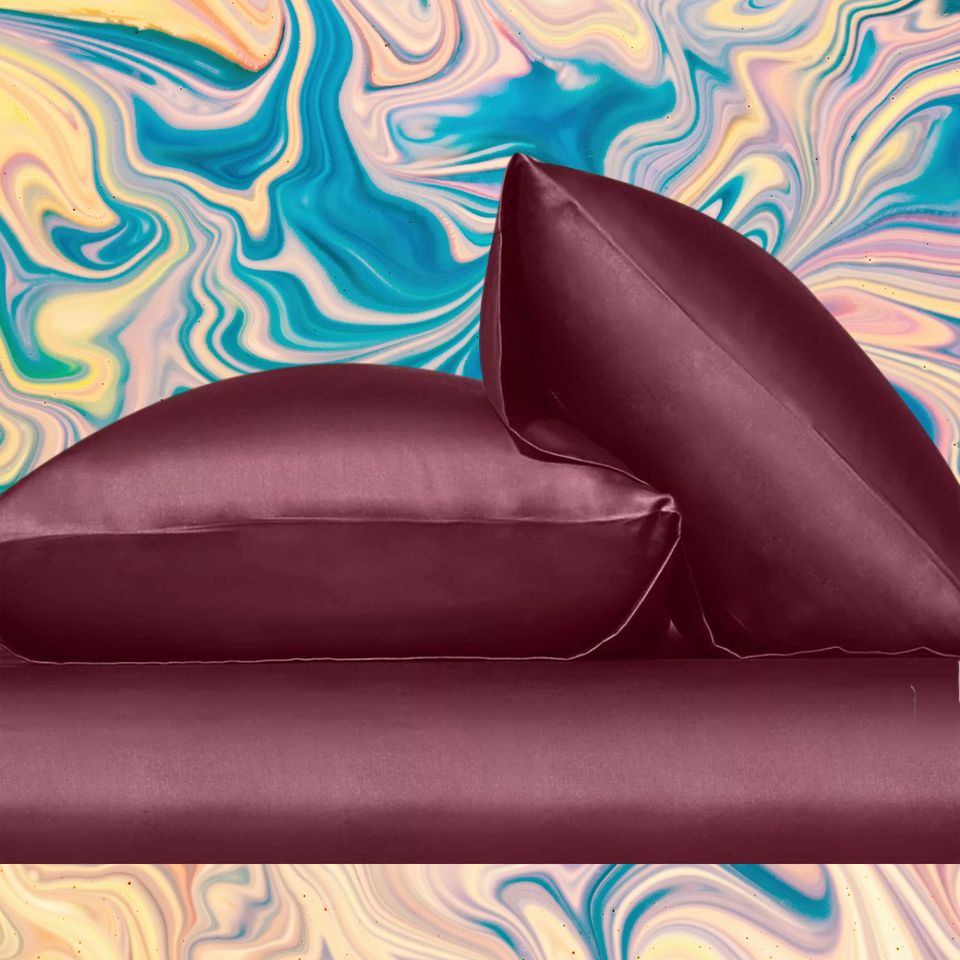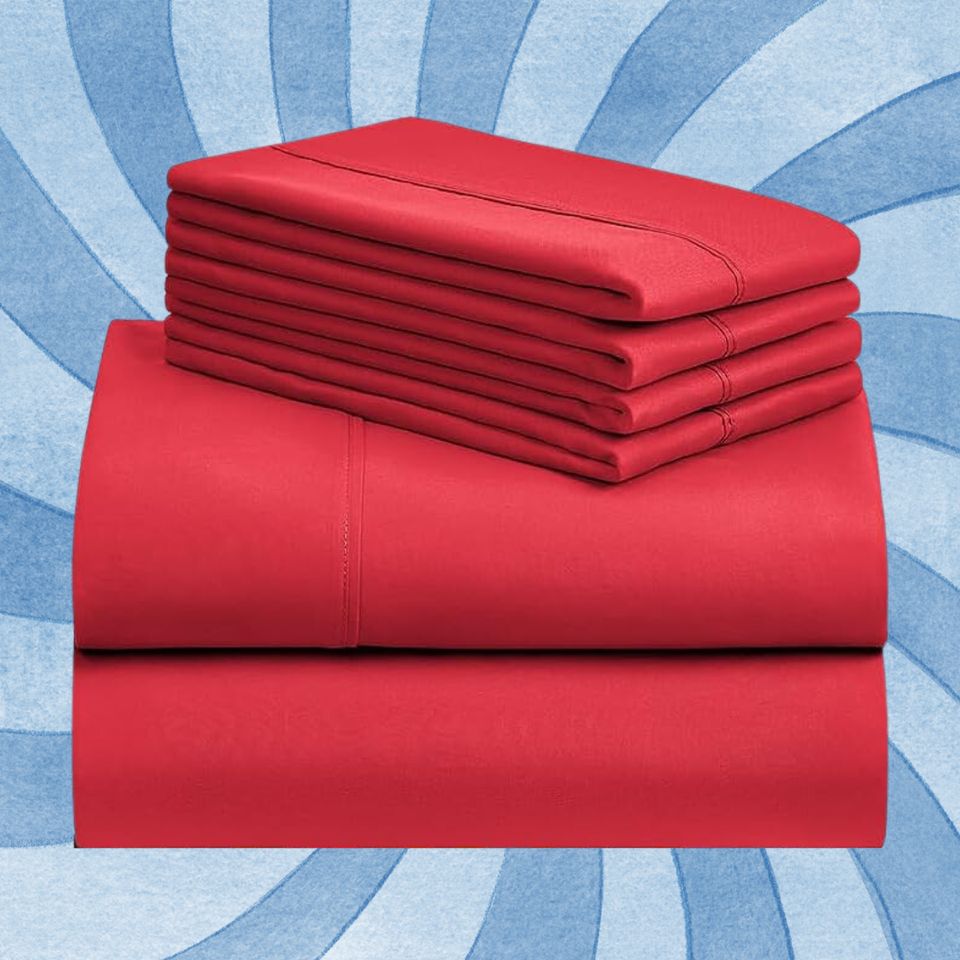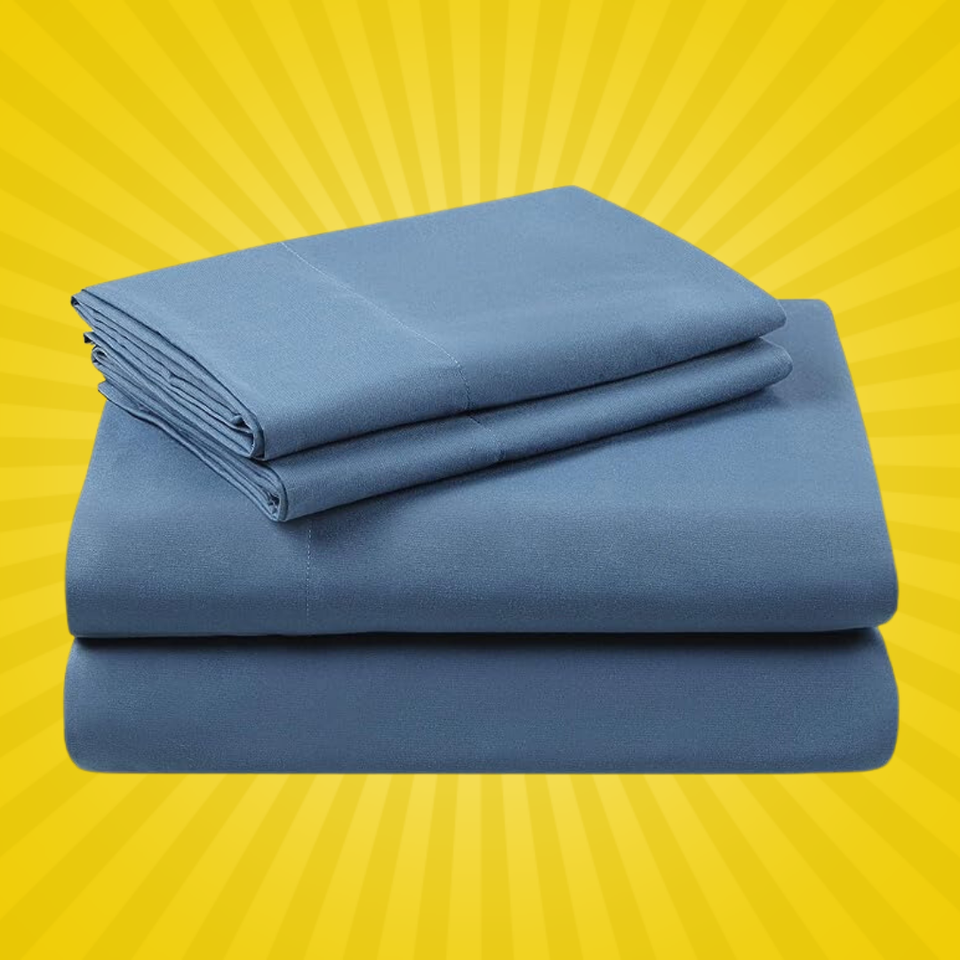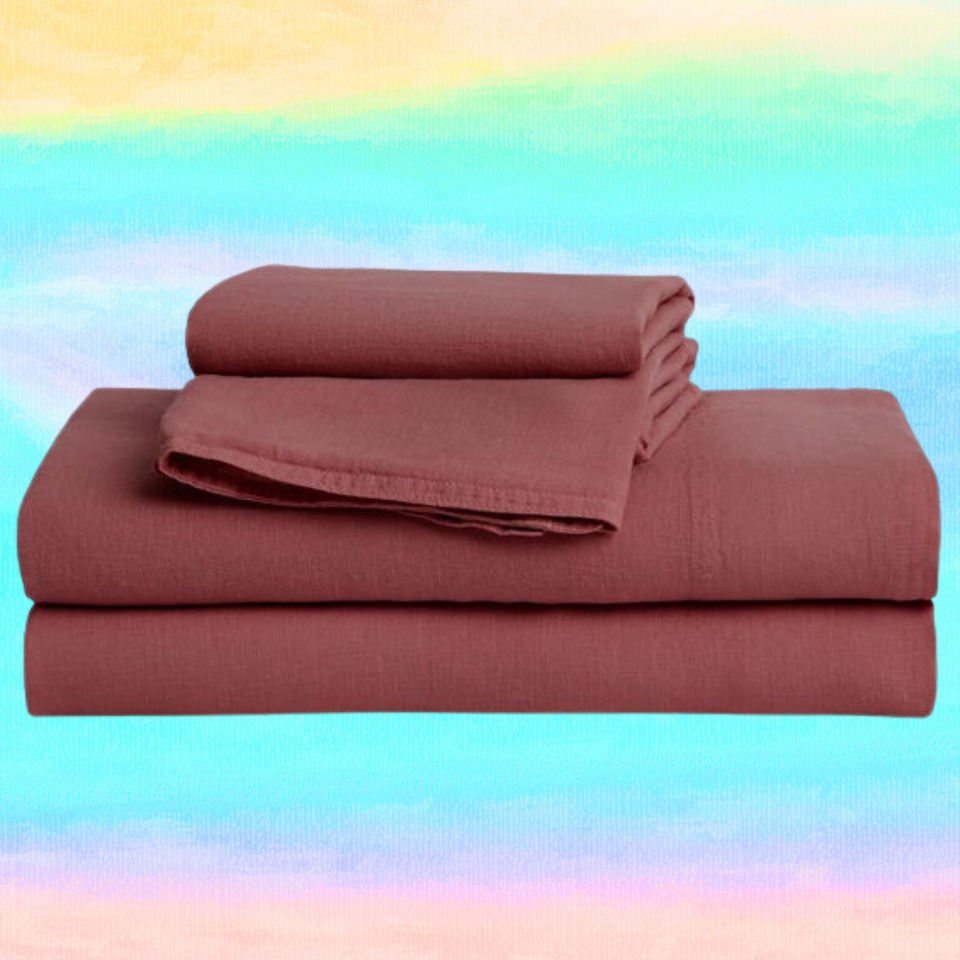If you’ve ever shopped for bedding, you’ve probably noticed the price of similar-looking sheets can vary significantly, from under $20 for a full set to more than $1,000 for a single flat sheet. So what’s the difference between cheaper options and more expensive ones? Does a higher price always mean better quality and comfort?
We talked to experts about which factors determine the cost of bedsheets — something many of us probably haven’t thought about before — and how to tell when they are actually worth the cost.
A higher thread count is usually pricier — but it doesn’t always mean better quality.
“[Thread count] is an important part of the sheet … and it affects the price both from a raw materials perspective and a manufacturing perspective,” explained Shannon Maher, dean of the Baker School of Business and Technology and previous chair of the Home Products Development program at the Fashion Institute of Technology.
What exactly is thread count? It’s the number of threads per square inch of fabric. For example, a 1,000-thread-count sheet has 1,000 threads per square inch and a 200-thread-count sheet has 200 threads per square inch. In higher thread count sheets, you’re using more materials per square inch and are therefore going to have a higher cost.
An inexpensive bedsheet is generally going to have a low thread count, which can make it less durable and feel rough. However, a higher thread count doesn’t always mean better quality.
“Consumers have been trained that a higher thread count is more expensive [and] … better quality,” said Margaret Bishop, a textile engineer who teaches at Parsons School of Design at The New School and at the Fashion Institute of Technology. But with really high thread counts, “you’re not necessarily buying a lot of extra smoothness or extra durability,” she said. “[They’re] just more expensive.”
In fact, a really high thread count sheet can have a construction that’s not as balanced, Maher added.
“In my personal experience … [I’ve tried] a 1,500 thread count, and it’s too fine and too flimsy,” shared Deborah Young, clinical assistant professor of textiles at Arizona State University’s Fashion Institute of Design and Merchandising.
So what’s the ideal thread count? It depends on the material and weave structure (how the threads are woven together). Two of the main types of construction are percale (a basic one-over-one weave) and sateen (a one-under and three-or-four-over weave). Maher recommends a 200-250 thread count for percale and a 400-600 thread count for sateen. Additional ideal thread count ranges for other materials and weaves can be found at SleepFoundation.org.
Some manufactured fibers are measured in GSM (grams per square meter) instead of thread count, which tells the weight, Young noted. A higher GSM means the sheets are thicker, denser and often pricier.
The quality of yarn is often better in a more expensive bedsheet.
Let’s look at the difference in quality of thread (or yarn) between inexpensive and expensive 100% cotton sheets as an example.
Better-quality cottons, like Egyptian cotton or Supima cotton, have longer fibers than less expensive cottons. Maher describes fibers “like the hair on your head.” They are the smallest part of a textile and make up a strand of yarn. Longer fibers spun into yarn are generally more expensive than shorter fibers because they are sturdier and better quality.
“If you take two long pieces of string and you twist them together, they’re going to be stronger than if you take a bunch of short pieces of string and twist them together,” Maher said.
In an inexpensive bedsheet, the yarns are also likely going to be thicker and not as evenly spun, Bishop added.
“It’s not going to be as durable and you’ll get a little bit more roughness to it,” she said. In a more expensive bedsheet, “the yarns are going to … be thinner but more tightly spun so that they’re still strong … and have a smoother surface,” she added.
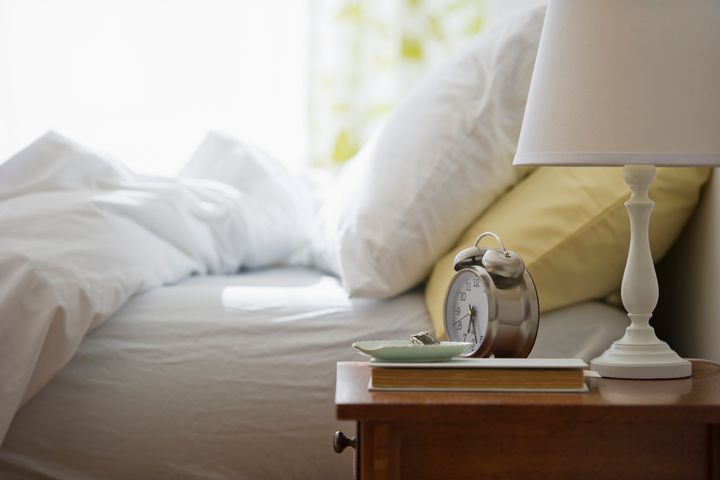
Tetra Images via Getty Images
The fiber content really matters for pricing, wear and tear, and comfort.
From cotton to linen to polyester, it’s important to be aware of the fiber content (raw materials) of your sheets. Not only does it affect price, but it also impacts the performance properties of the sheet, such as breathability and durability.
Synthetic materials, like polyester or nylon, are generally less expensive than other options but can be tougher on the environment. While they can feel smooth and are durable, they can be particularly hot.
“It’s [also] difficult to wash body oil or moisturizing lotion … out of a polyester or nylon fabric because they are petroleum-based fibers and want to hold on to that oil,” she added.
Another option is cellulosic (plant-based) fibers, like Tencel (often sourced from eucalyptus trees), which usually have mid to high price points.
“We call them man-made [because] … we melt them down from the tree and then use them,” Young said, noting they are made with natural ingredients. Sheets made with those fibers are known for being extra smooth and absorbent.
Cotton sheets vary in price points, depending on the type of cotton used. More expensive options (like Pima, Supima and Egyptian cotton) have long-staple fibers and are breathable, durable and plush, according to SleepFoundation.org. Regular cotton is less expensive but not as durable and can feel rougher on the skin.
Linen sheets can be pricier and can wrinkle easily, but they are highly durable and breathable and have a cozy feel.
Upper-end brands can be pricey — but they have more stringent standards.
“There’s a lot of marketing expenses that go into building these brands, but there is also a reputation to protect,” Bishop said.
Therefore, there are going to be more quality checks in place, Maher added.
“They’re going to be more specific with what the specifications of the sheet are … and the testing they require to ensure the quality,” she said.
If you want to buy sheets from an upper-end brand at more affordable prices, look for their discounts and promotional offerings, Maher advised. She said the home industry also usually has a big sale in January so that’s a particularly good time to shop for bedding.
Are higher-priced sheets always worth it?
“Just because it’s a bigger price doesn’t automatically mean that it’s better quality,” Bishop said. “It could have a bigger profit margin built into it or it could in fact be better constructed from better raw materials.”
Do your research on the brand as well as on the fiber content and thread count or GSM of the sheet. Remember that too high of a thread count can increase the cost of sheets and not necessarily provide any benefit in terms of quality or comfort.
That said, our experts agree that it’s worth buying sheets that are constructed well with quality materials and that are a good fit for you. (For example, hot sleepers may be better off with a percale weave and breathable fibers like Tencel, linen and certain cottons. For cold sleepers, a sateen weave and polyester blend would be warmer.)
Studies have shown that people who perceive their bedding as uncomfortable (like too hot or too cold) are more likely to experience problems with sleep, according to Michael Grandner, director of the Sleep and Health Research program at the University of Arizona.
“Bedding is important. … Where we sleep can play a big role in how we sleep, and how we sleep can impact our mental and physical well-being, immune system, metabolism and even heart health,” he said. “Investing in good quality sleep can really pay off.”
Maher said that purchasing better sheets should be looked at as an investment: “Consider the time you spend in your bed … [plus sheets] don’t go out of style and can last years.”
Looking for some cooling sheets this summer? Check out these reviewer-beloved picks below.
HuffPost and its publishing partners may receive a commission from some purchases made via links on this page. Every item is independently curated by the HuffPost Shopping team. Prices and availability are subject to change.
Breathable, award-winning eucalyptus sheets
These award-winning Buffy eucalyptus sheets promise to to keep your body at the ideal temperature for sleeping through the night. Cooling and soft, they get softer and softer the more you wash them, so you’re sure to love them even more as you use them. They’re gentle on sensitive skin and sustainably plant-based, and Buffy says they’re also confirmed by industry testing to be even more breathable than linen or cotton. They’re available in six sizes and 14 naturally-dyed colors.
Promising review: “These sheets are AMAZING! So soft and airy…they get softer with every wash! Would recommend to anyone wanting ‘cooling’ sheets to buy these.” — Emily F.
Buttery microfiber sheets for budget-friendly breathable luxury
Scores of reviewers liken these sheets to those at hotels, and it’s not difficult to see why. Durable, buttery–soft and breathable, Mellanni sheets are downright luxurious without breaking the bank. Their quick-drying, double-brushed microfiber fabric cools skin to ensure you’ll rest comfortably. Available in an array of colors and sizes, including extra-deep-pocketed options, these are a no-brainer purchase for budget–conscious hot sleepers.
Promising review: “My fiancé sweets a lot during his sleep and it’s worse during the summer. We’ve tried to look for cooling sheets in stores but could never find anything reasonably prized for the quality. These however were a game changer. I surprised my fiancé with the new sheets and that night he slept like a baby with no sweaty sheets!!! Honestly we were both surprised by how much cooler these sheets are. Of course he still gets hot but it has significantly reduced the sweatiness and wet sheets! Definitely recommend this product.” — Andrés
Cooling sheets that promise to be even softer than Egyptian cotton
These luxurious, breathable microfiber sheets promise to be softer than even Egyptian and organic cotton. Their wrinkle- and shrink-resistant fabric, deep pockets and affordable pricing is just the cherry on top. They’re available in six different sizes and 46 calming colors.
Promising review: “These sheets have completely transformed my sleep routine. From the very first night, I was swept away by the sheer comfort and luxurious feel of these sheets. The promise of breathability and cooling is no exaggeration. They are a game-changer, especially during warmer nights. I’ve noticed a significant reduction in night sweats, allowing me to sleep more soundly without constantly readjusting or waking up uncomfortable. The sheets are incredibly soft against the skin and have held up well through multiple washes.” — K.c.
Cloudlike cooling bamboo sheets
These dreamy, quick-drying bamboo rayon sheets wick moisture away from your skin for cooler, cloudlike sleep, and Bedsure says their unique twill weave gives them the smoothness of silk with the durability of cotton. Plus, they’re Oeko-Tex certified, meaning they’re safe from harmful substances and toxic chemicals, so you and your loved ones can rest cool and easy. Grab a set in six sizes and 19 colors.
Promising review: “I finally found the perfect sheets! Unlike satin sheets, these don’t feel unnaturally slippery, but more like a second skin. They’re soft to the touch, exceptionally lightweight, keep you cool and feel lush. I have purchased a huge stack of sheets from other companies that made promises they couldn’t keep. They will all be replaced by these very affordable ones. Although I’m naturally an early morning person, these sheets have me wanting to change this habit and get just a little more sleep.” — karen lizabeth rice
Temperature-regulating bamboo sateen sheets
California Design Den’s bamboo sateen sheets are breathable, cooling and claim to be even softer than silk. They promise to keep hot sleepers cool year-round with their temperature-regulating fabric, and their Oeko-Tex certification ensures that they are free of harmful substances. They’re available in five sizes and six neutral colors.
Promising review: “Obsessed. I was searching high and low for cooling sheets because I sleep extremely hot and hate itchy sheets. I also didn’t like my previous sheets because dog hair stuck to them no matter how many times I washed and lint rolled them. These are extremely cooling, silky, and don’t attract any hair.” — Best Sheets
Moisture-wicking Sleep Zone sheets
These Sleep Zone cooling sheets are said to be faster-drying than cotton and promise to help balance your body temperature thanks to their moisture–wicking Nanotex technology. If you want to feel cozy and cool, this soft, breathable set will do the trick while looking good in the process, since it promises to be both wrinkle- and shrink-resistant. Sets are available in four sizes and 21 colors.
Promising review: “I used to wake up drenched in sweat every night no matter how cold the room was. I always thought it would be impossible to get any relief without spending a lot of money. But I tried out these sheets and was really impressed with how cool they kept me while I was sleeping. I hardly sweat at all at night now! They’revery easy to keep clean and are just as soft as the day I got them after many many wash cycles.” — Amazon Customer
Bestselling bamboo sheets
These bestselling Lux Club bamboo sheets help cool your body temperature so you can sleep less hot on even the warmest nights. Silky-soft, breathable and hypo-allergenic, the set delivers moisture-wicking comfort that’s downright heavenly. They’re available in 35 vibrant colors and seven sizes.
Promising review: “I am a hot sleeper and this has been the hottest stretch of the summer. Typically that means uncomfortable nights no matter what I do. But I noticed an immediate improvement the first night using these bamboo sheets. I have not had a sweaty night since switching. I will be buying another set right away.” — Bradley
Moisture-wicking deep-pocket sheets
Made from a proprietary blend of microfiber and CoolMax fabric, these cooling sheets wick away heat and sweat from your skin, allowing cool air to circulate and keeping your body dry and comfortable. Lightweight and soft, they feature extra-deep elastic pockets to help them stay put on your mattress throughout the night. Best of all? Their mega–affordable price mean you can grab backups for your whole fam. They’re available in six sizes and six soothing colors.
Promising review: “Best sheets for hot sleepers! My hubby and I both get hot and sweat at night. These sheets don’t absorb sweat and keep cool and dry all night! Amazing temperature control for those like me with menopause. Great sleep!” — Michele Mabry
Light, airy linen sheets
Brooklinen sheets are iconic for a reason. Made with 100% European flax linen, they’re light, airy and extra cool. In fact, they’re so breathable and comfy, you’ll dread swapping them out for anything else. Plus, their individually garment-dyed colors ensure they’ll look effortlessly stylish in your home. Get them in one of six sizes and 15 colors.
Promising review: “I love, love, love my sheets. I didn’t think I was going to like sleeping in my linen sheets as much as I do. Took them off to wash them and place new regular sheets on my bed and almost wish I hadn’t. My regular sheets feel too hot to be in my bed. Love the feel of linen on new sheets and duvet. Thinking on getting a couple more sets.” — Liliana G.

